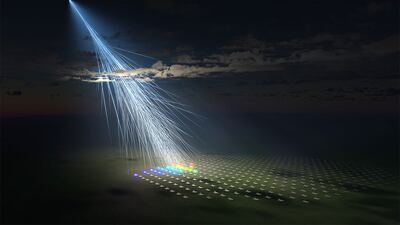Scientists have observed the second-highest energy cosmic ray to have come from outside our galaxy.
Named Amaterasu after the Sun goddess in Japanese mythology, it was detected by researchers at the University of Utah and the University of Tokyo using the Telescope Array Project – several ground-based telescopes in Utah that measure high-energy cosmic events.
The highest energy ray was detected in 1991 and was later called the "Oh-My-God" particle by astrophysicists who believed that it was impossible for our galaxy to produce that kind of energy and that it must have come from the beyond.
A study on Amaterasu, which was detected on May 27, 2021, was published in the Science journal on November 23.
“The particles are so high energy, they shouldn’t be affected by galactic and extra-galactic magnetic fields. You should be able to point to where they come from in the sky,” said John Matthews, Telescope Array co-spokesman and co-author of the study.
“But in the case of the Oh-My-God particle and this new particle, you trace its trajectory to its source and there’s nothing high energy enough to have produced it. That’s the mystery of this – what the heck is going on?”
Unknown origins
Cosmic rays come from violent celestial events that strip matter to subatomic structures that travel through the universe at nearly the speed of light.
They are charged particles that travel through space and hit Earth's upper atmosphere.
The Telescope Array has observed more than 30 ultra-high-energy cosmic rays, but none have approached the Oh-My-God-level energy until Amaterasu.
No observations have yet revealed their origin or how they are able to travel to Earth.
The most recent energy event was equivalent to dropping a brick on your toe from waist height, according to the University of Utah researchers.
The event triggered 23 detectors at the north-west region of the Telescope Array, splashing across 48 square kilometres.
Its arrival direction appeared to be from the Local Void, an empty area of space bordering the Milky Way galaxy.
“These events seem like they’re coming from completely different places in the sky. It’s not like there’s one mysterious source,” said John Belz, professor at the University of Utah and co-author of the study.
“It could be defects in the structure of spacetime, colliding cosmic strings. I mean, I’m just spit-balling crazy ideas that people are coming up with because there’s not a conventional explanation.”


